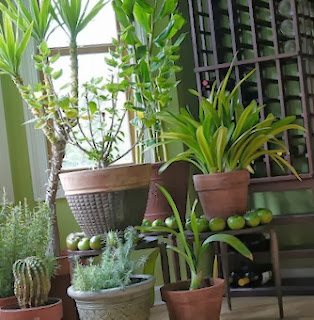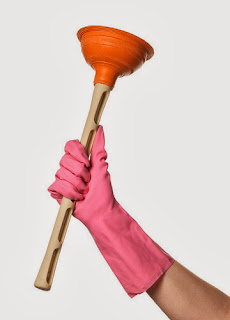Sometimes our apartment begins to feel stuffier than usual. It can't be helped, especially during the summer, when temperatures fluctuate and we can't always comfortably open all of our windows for some fresh air. So what's an apartment dweller looking to add a little freshness to their home to do?
Simple: get a couple houseplants! Houseplants, both in homes and in apartments, are a great way to freshen and purify your air while also sprucing up the look of your living area. It's a win-win, especially during the summer, when the extra hours of daylight help plants flourish.
Already we can hear you wondering and asking questions like, what kind of plant should you get? How much care will a plant need? Where will be the best place to put one? Well, it's time to start answering those questions!
Check out this article from apartmentguide.com to learn more about the good a houseplant could do in your apartment and get some tips on selecting the plant you get:
What’s in the air?
Many people develop mysterious illnesses and allergies from the place they least expect: Their homes! That’s because we can be surrounded by toxins such as xylene,a pollutant found in paints and glues; benzene, found in paints, glues, detergents, furniture wax, and tobacco smoke; formaldehyde, contained in processed wood products, foam insulation, some synthetic fabrics, cosmetics and shampoos; and perchloroethylene, or PERC, used by the majority of dry cleaners. These toxins usually enter our systems when we breathe them in as products off-gassing — what happens when material “breathes out” a level of pollution.
How do potted plants improve air quality?
NASA studies have shown that plants have the ability to balance indoor humidity, absorb excess carbon dioxide and pollutants through the tiny openings in their leaves, and release oxygen. They’re like living, breathing air purifiers, and they can be had for little money. What’s more, how many air purifiers can you think of that actually improve the look of any space they’re in?
6 houseplants that clean air
Now that you know how good plants can be for you and the air in your apartment, you’re probably eager to get started. Here are just a few of many plants that are known to improve the healthful atmosphere in your home:
Peace lily: The peace lily is a heavy-hitter on all lists of healthful houseplants and is known to reduce benzene and formaldehyde. Easy to care for, the peace lily is an all-around powerful air-purifier and pollution-buster and looks pretty, too.
Marginata: This plant’s lovely red-edged leaves add color to your apartment while removing benzene and formaldehyde from the air, as well as filtering out other toxins. It’s also easy to care for.
Orchids: Considered a high-maintenance plant by the uninitiated, orchids are really quite hardy. They are effective at removing xylene from the air and releasing oxygen at night, making them a good bedroom plant. Orchids perform heavy-duty air cleaning while making your apartment look good.
Gerber daisies:These bright and cheerful flowers aresuper effective at removing trichloroethylene, another dry cleaning solution, and benzene from the air. Just give these plants lots of light and consider growing them in a laundry room or your bedroom, where they can do some of their best work.
Spider plant: This long-time favorite houseplant grows fast, with long, grassy leaves. It’s very effective at removing gases and toxins like xylene and formaldehyde from the air. Consider keeping it near the fireplace or in the kitchen to deal with carbon monoxide that can collect in these areas.
Ferns: Once standard-issue in ’70s restaurants, ferns are actually complex plants that have been around since prehistoric times. Their large feathery leaves are what work so well to clean the air of pollutants like toulene and xylene, which both are found in many paints, nail polishes and glues.
In the pursuit of healthier indoor air quality for your apartment, house plants should be your first line of defense. Bring some home today to beautify and detoxify your home.

















